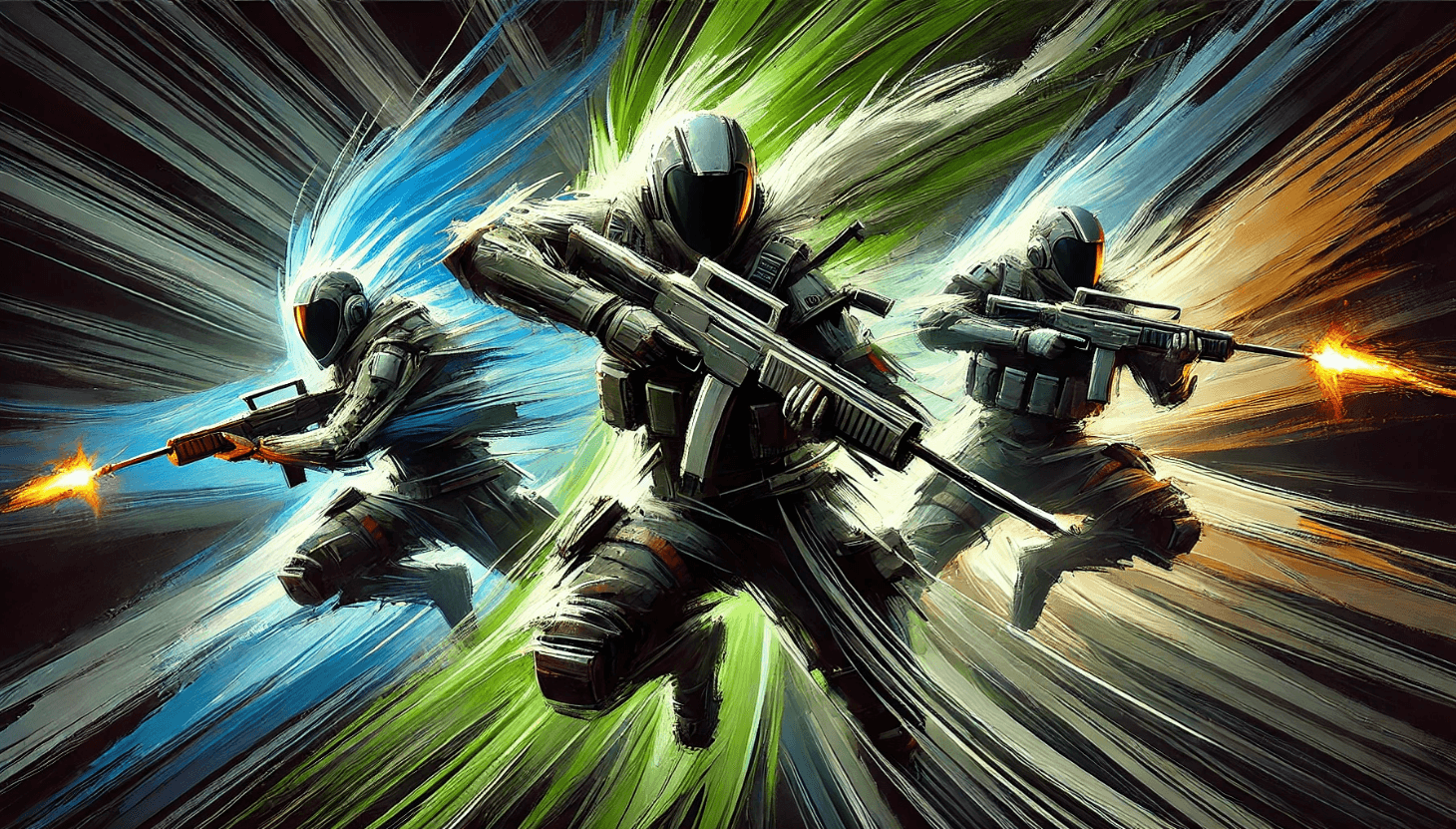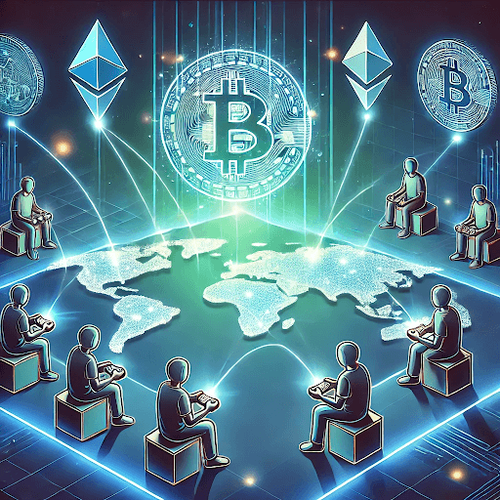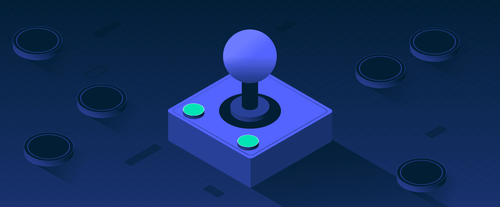The History and State of GameFi
In 2017, CryptoKitties was one of the first Web3 games to capture attention, allowing players to trade, collect, and breed NFT cats. However, the game's popularity faded as new NFTs were continuously minted, reducing the rarity of existing ones. Rising transaction fees, sometimes exceeding $100, further contributed to its decline.
Following CryptoKitties’ fall, other Web3 games like Axie Infinity, Defi Kingdoms, Decentraland, and The Sandbox gained traction, but their success was largely short-lived. Axie Infinity remains the most active, with 359,000 users in the past month, though most others have struggled to maintain their momentum.
GameFi and related narratives have since 2021 been on a general downtrend and are now plateauing, proving that there is a need for innovation or a pure increase in the “fun factor” for the interest to stick. Looking at searches via YouTube, there seems to be a greater interest than a simple Google Search would initially show, with higher average numbers across several search terms, which can serve as an additional point of research and feedback for game developers.
Off The Grid & Gunzilla Games
Off The Grid is a new third-person shooter joining the growing list of battle royale games released in recent years, including popular titles like Fortnite, Apex Legends, PlayerUnknown's Battlegrounds, and Call of Duty: Warzone.
What sets Off The Grid apart from other games beyond simply being a Web3 title? Unlike Fortnite, there’s no structure-building, and it lacks the smooth first-person shooting of Warzone or the fixed character abilities of Apex Legends. However, it offers a unique twist with enhanced movement options using jetpacks and cybernetic limbs, which can be taken from opponents to swap out your abilities.
So, the game offers a unique twist on the genre, but what about the team behind it? Gunzilla Games is led by industry veterans like Timur Davidenko, who has worked on titles such as Far Cry and Crysis, and Petr Cherkes, known for his work on The Last of Us and Uncharted—games that are highly regarded in their own right. Crysis, in particular, became a meme with the phrase “Can it run Crysis?” due to its graphics that pushed the hardware's limits at the time.
With over 200 employees, a company of this scale requires significant funding to develop a game over several years. Since 2022, Gunzilla Games has raised $76 million, with notable backing from The Spartan Group. Delphi Ventures, announced as the largest validator on September 18, 2024, further strengthens its financial support.
Finally, Off The Grid runs on GUNZ, an Avalanche subnet. Their decision was that the energy consumption is lower than other networks and, therefore, more efficient for games.
First Impressions and Fun Factor
Off The Grid offers over 60 hours of story-driven content, and early impressions suggest that players will encounter these narrative elements during load times, with clips likely highlighting the origins of the game’s universe. Alongside these clips, players will also have the chance to engage with story content in the upcoming 150-player battle royale mode. However, it’s still unclear how exactly this will be implemented.
Set in a dystopian future, the game presents a world where real people become participants in an actual battle royale, undergoing rigorous training to compete. The atmosphere is dark yet laced with a twisted sense of humor, adding depth to its grim setting.
Now, let us dive into the gameplay itself. The movement—particularly flying around—is incredibly fun and easily the highlight of my roughly 8 hours with the game. The ability to swap out cybernetic limbs for new abilities is a fresh and exciting concept, and some of these swaps prove to be highly useful during regular gameplay.
Is the fun movement and cybernetic limb mechanic enough to keep me and other players returning? While the movement is enjoyable and captures what Anthem should have delivered, the core gameplay loop—mainly the shooting—feels a bit underwhelming. You'll likely understand if you have played games like Apex Legends, Call of Duty, or Counter-Strike. The best way to put it is that the weapons lack distinction and don’t quite pack the punch you'd expect, the oompf if you will.
Why focus on gameplay when it’s tied to crypto, and many players might be more interested in profit, similar to past Web3 games? Without a strong fun factor, the game could follow the same pattern as others—experiencing a brief surge of interest before fading away. While every game hits a peak, the real challenge is maintaining a player base and generating a steady revenue stream over time.
Lastly, it's worth noting that the game is third-person, not first-person, as many, myself included, tend to prefer. I would rate the fun factor of the game a 7/10, but that score could go up if the gunplay were improved. Comparatively, I rate the fun factor of Apex Legends at an 8.5, primarily due to the quality of the shooting, which ultimately makes up the core gameplay.
Monetization and Earnings Potential
Off The Grid is a free-to-play game, and Gunzilla Games plans to generate revenue through a mix of traditional and crypto-based streams. One option is the OTG Pro subscription, priced at $13.86 USD (11.99 CHF), with expected regional price variations. This subscription includes a classic battle pass for earning in-game skins, the ability to sell items on the market, faster token earnings (5x for the GUN token), and more. As an example of what earnings could look like, Apex Legends generated more than $600 million in 2021 alone, which was two years after its launch.
Node owners will be responsible for validating earned NFTs and will receive a share of the proceeds from decoding items. Additionally, the original node that decodes an item will earn a percentage when sold on the market. All nodes have reportedly been sold and will be available for purchase on the secondary market once the Mainnet launches. Gunzilla Games is also expected to earn revenue from transactions on the GUNZ platform. However, since the tokenomics haven't been released yet, it's unclear how the system will work and how value will be maintained. There’s a possibility the token could face inflation, as users will earn it through mission completions and in-game performance.
Should you jump in now to start earning before the Mainnet launch? If you're hoping to stockpile a large amount of GUN before the Mainnet goes live, think again. All GUN earned during early access will be wiped when the Mainnet launches as per the moderators of the Gunz Discord. However, any items you earn during gameplay will carry over. This means you could start accumulating items now, which might hold value when the Mainnet launches—assuming they remain popular and maintain high market demand. For example, some of the rare guns with high rarity are priced at over 6,000 GUN, while base weapons typically sell for around 5 to 30 GUN.
Gamers, Web3 Games and Trends
While those in the Web3 space who also play games are eager for the GameFi sector to take off, combining gaming with earning potential, the broader gaming community remains skeptical. Many are already put off by the recent large-scale marketing campaign from Gunzilla Games, which featured popular streamers like Shroud and TimTheTatman playing the game and posting videos on YouTube.
In addition, while subscription models and microtransactions have become more common, there’s also a growing number of gamers who are strongly opposed to additional monetization in games. Many believe that if monetization exists, it should be limited to cosmetic items, as any purchase of weapons or gameplay advantages is often viewed as "Pay to Win."
Despite the growing opposition from some players, the reality is that companies are seeing increased revenue from subscriptions and microtransactions, with the market projected to grow from an estimated $80.88 billion in 2024 to $219.4 billion by 2032. This is why Off The Grid has a strong chance of financial success if it can capture a portion of the battle royale market. Success in this space often hinges on attracting a "whale base," where 80% of the revenue is generated by just 20% of the player base.
With the general financial aspects covered, what happens when we add crypto into the mix? For many traditional gamers, crypto still carries a stigma, often triggering thoughts like, “Is this just another quick-money crypto game that will crash and burn?” This highlights the ongoing challenge of proving blockchain technology can coexist with gaming, offering players both fun and earning potential. Off The Grid may have the opportunity to bridge that gap and show how the two can work together successfully.
Conclusion
Off The Grid enters the GameFi arena at a crucial time, where blending blockchain with gaming stirs both excitement and doubt. While the Web3 community is eager to see gaming paired with earning potential, traditional gamers remain wary, often viewing crypto in games with suspicion. Proving that blockchain can enhance, rather than detract from, the gaming experience will be key to Off The Grid's success.
With a seasoned team and strong financial backing, Gunzilla Games has the tools to deliver a unique game in a crowded battle royale market. Its standout features, like advanced movement and cybernetic ability swapping, give it an edge, but refining core gameplay is crucial to sustaining player interest.
The game’s monetization plan, which includes subscriptions and microtransactions, taps into a growing market expected to reach $219.4 billion by 2032. If Off The Grid can draw and keep players, especially those willing to spend, it could thrive financially.
For investors, the potential lies in how effectively Gunzilla Games can blend gaming and blockchain without alienating players. While it’s too early for guarantees, Off The Grid’s progress in navigating these challenges could make it a key player in the future of GameFi.




